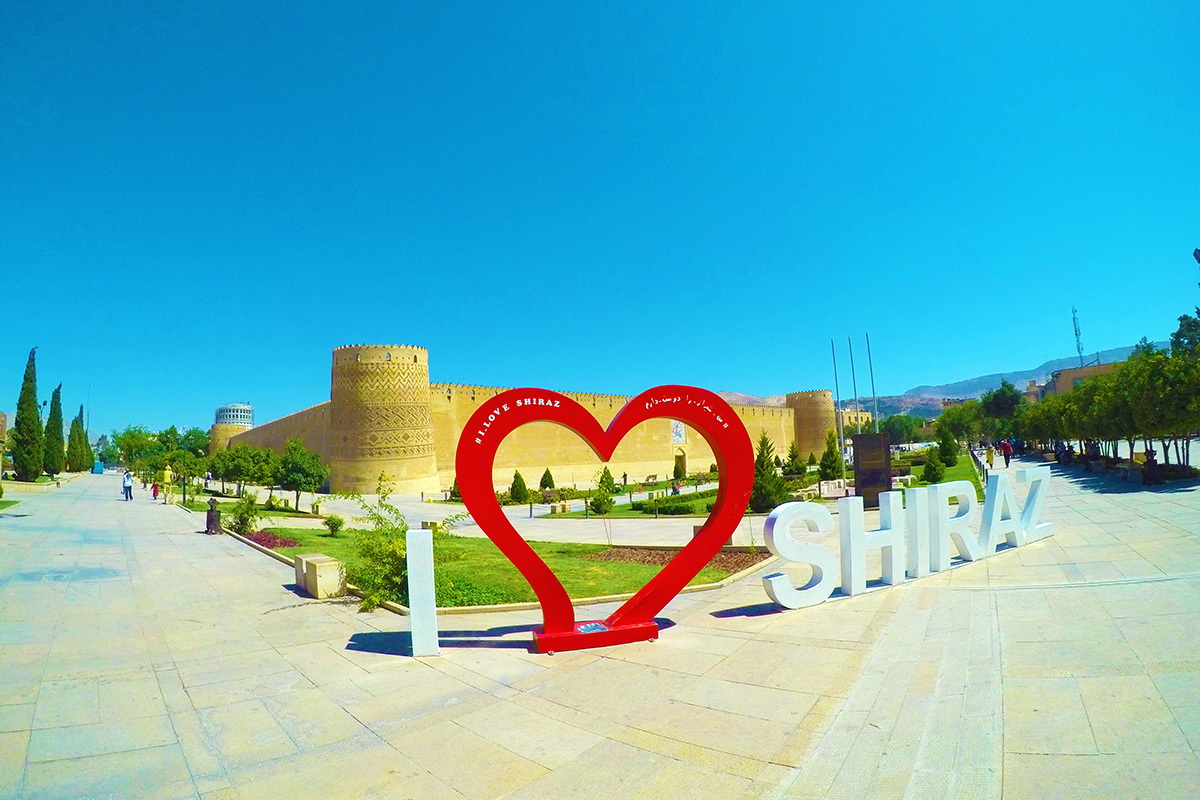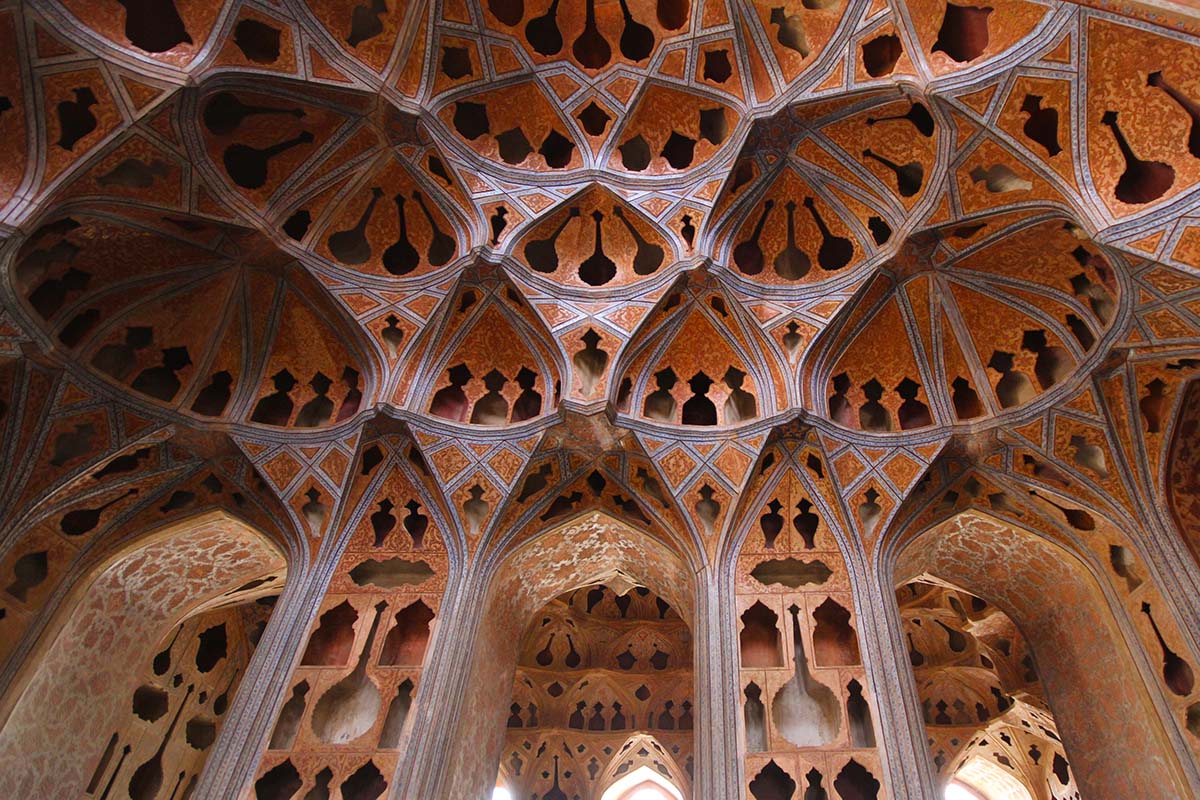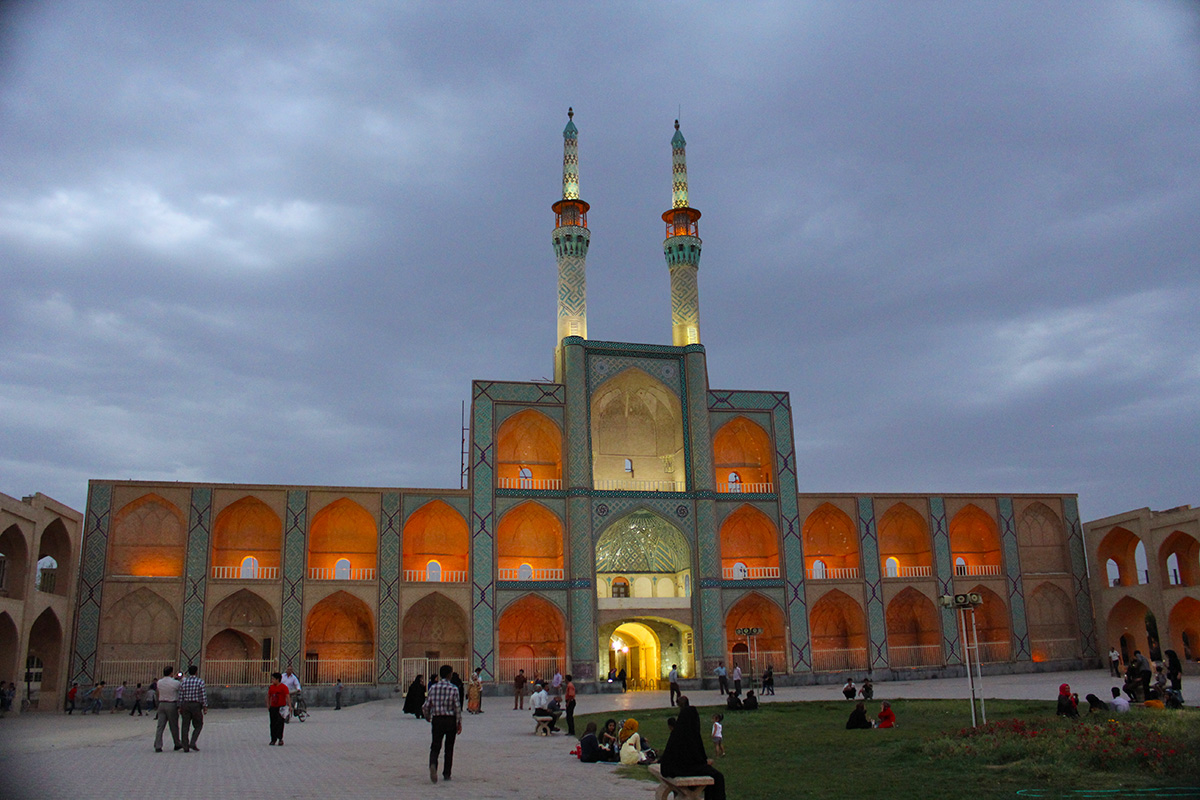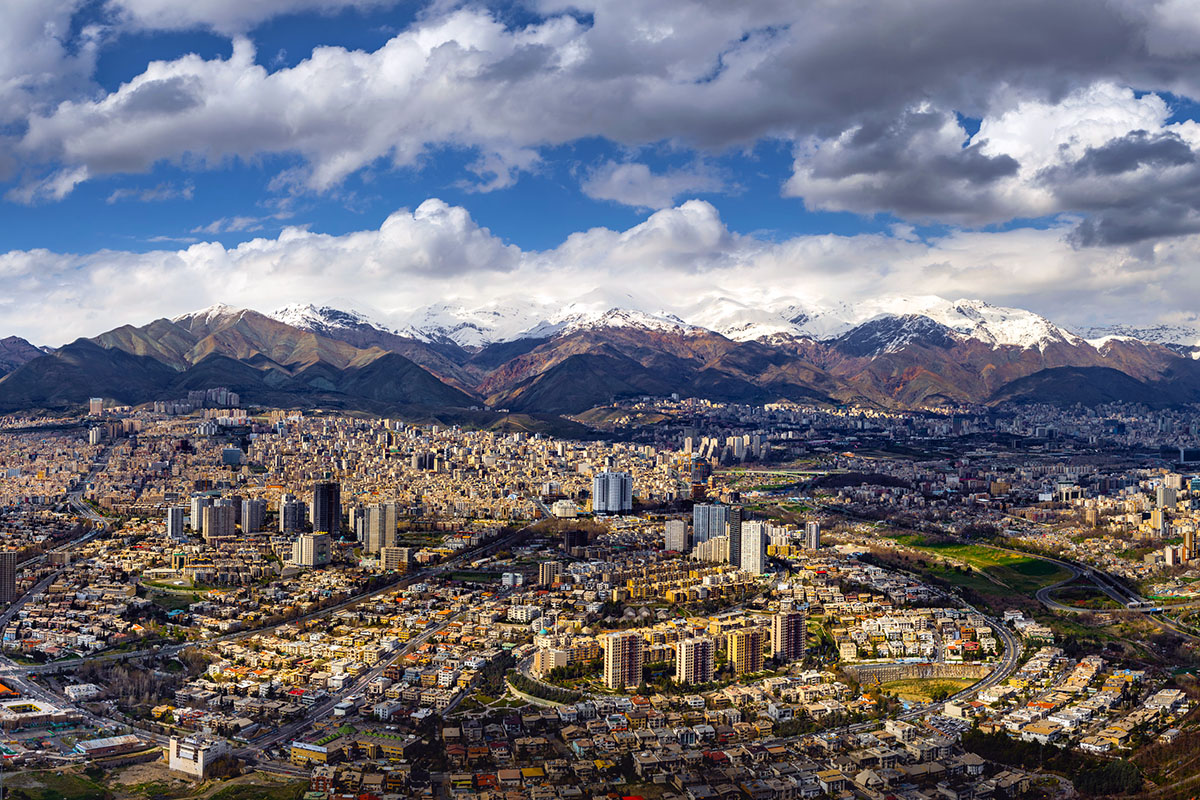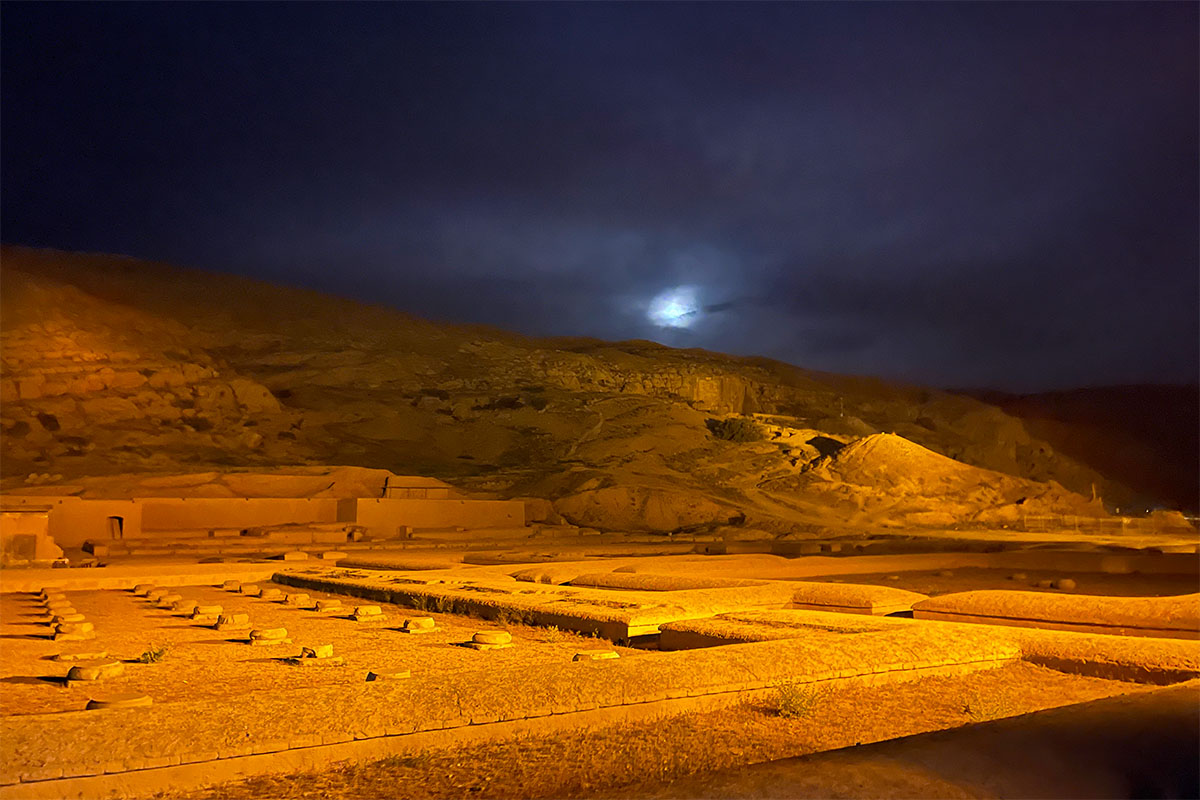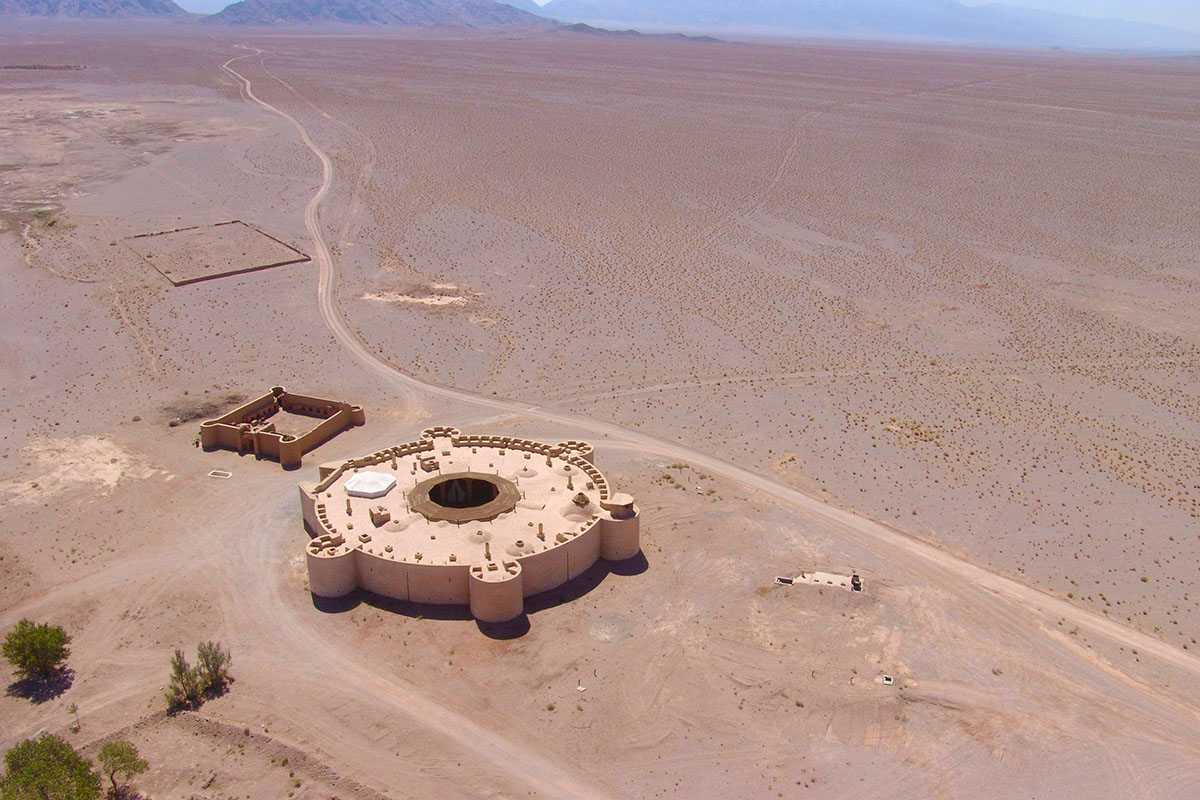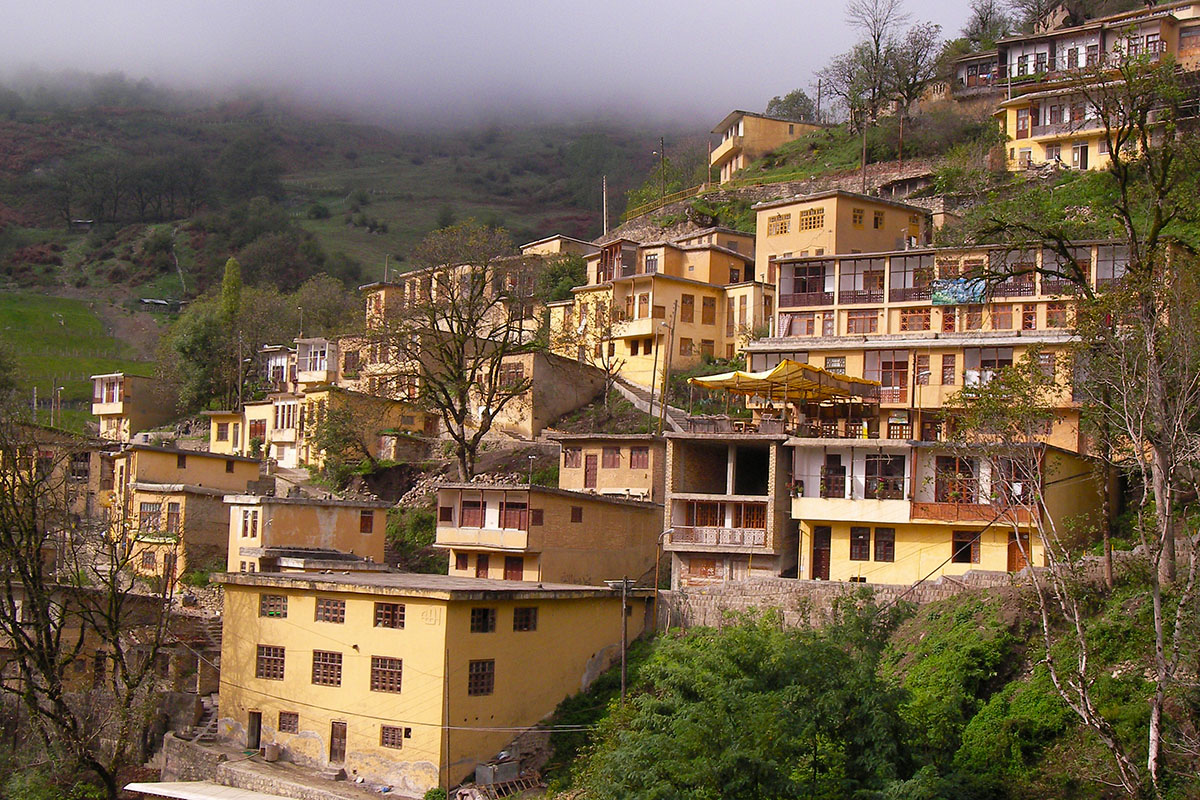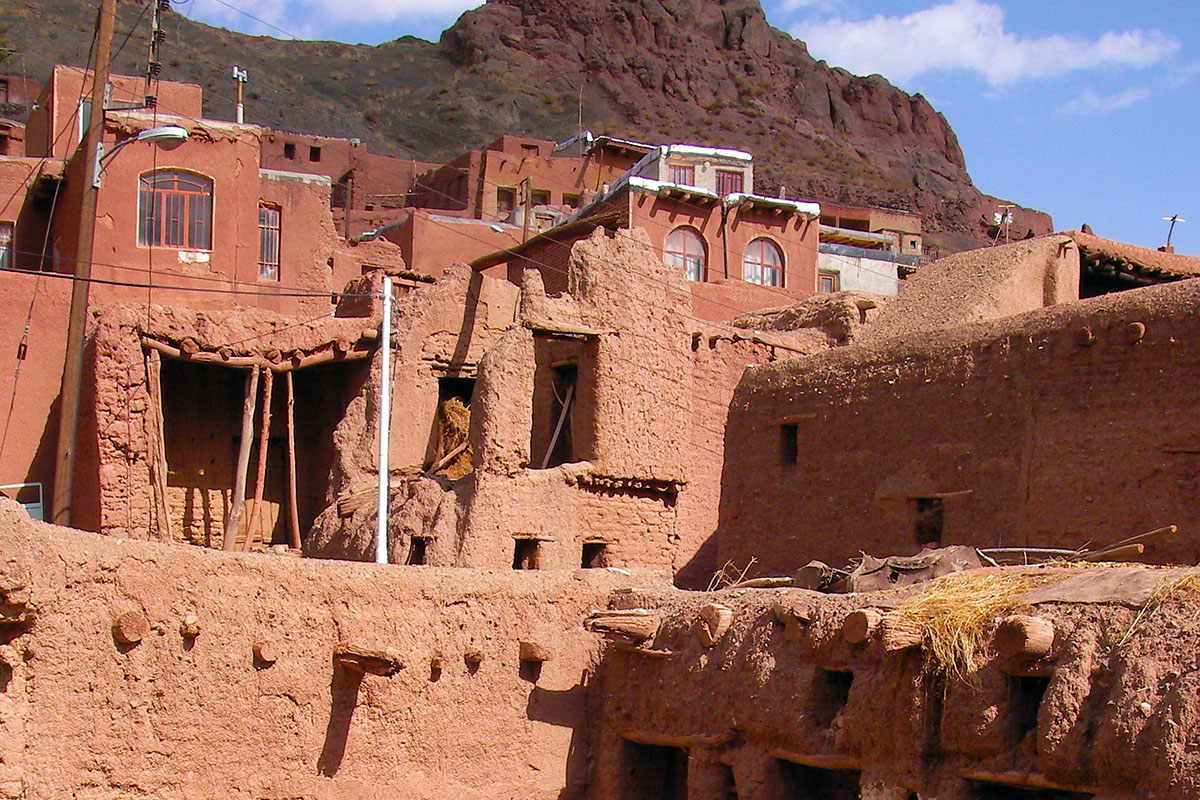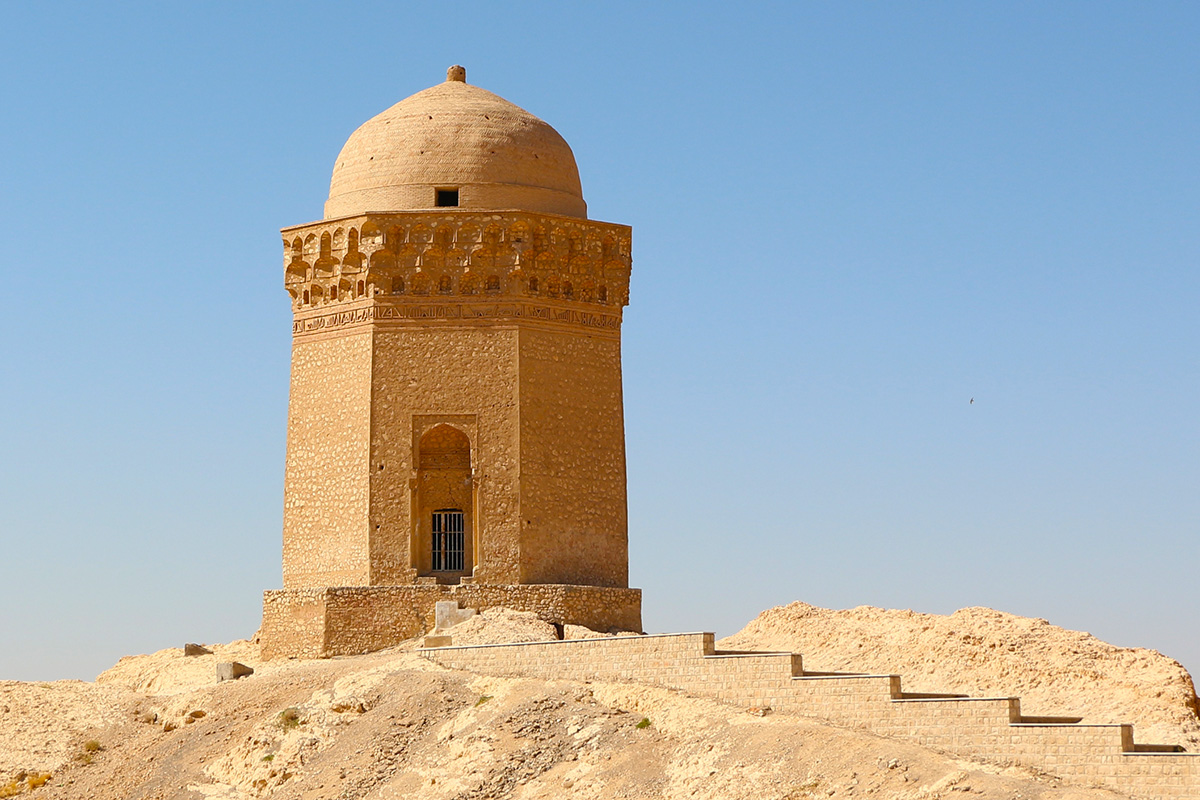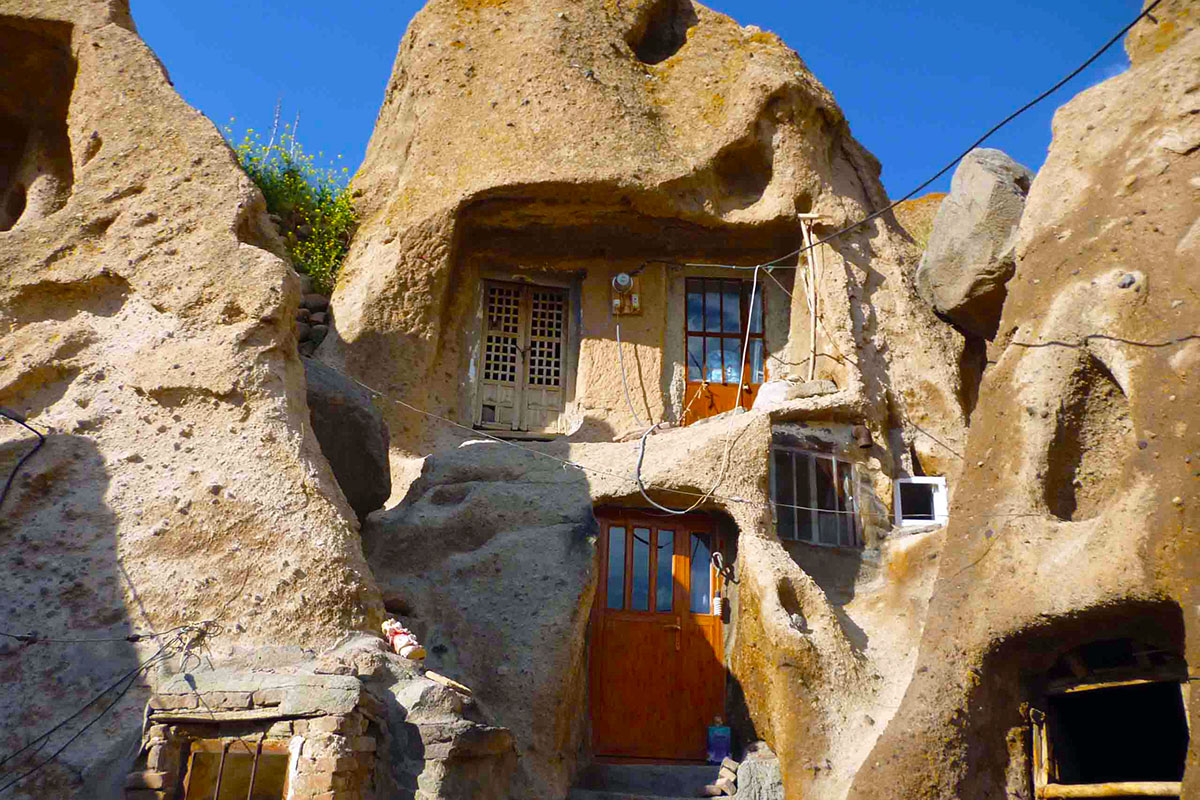Golestan complex is a must-see in Tehran and the arts that have been used to build the palaces including the tile work, mirror work, brick work, wood work and stone work plus its garden give a great pleasure to your eyes and mind. The Arg was built during the reign of Tahmasb I (r. 1524-1576) of the Safavid dynasty (1502-1736), and was later renovated by Karim Khan Zand (r. 1750-1779). Agha Mohamd Khan Qajar (1742-1797) chose Tehran as his capital. The Arg became the site of the Qajar (1794-1925).Court and Golestan Palace became the official residence of the royal family. The oldest of the historic monuments in Tehran, the Golestan Palace (Palace of Flowers) belongs to a group of royal buildings that were once enclosed within the mud-thatched walls of Tehran’s Historic Arg (citadel). During the Pahlavi era (1925-1979) Golestan Palace was used for formal royal receptions. The most important ceremonies to be held in the Palace during the Pahlavi era were the coronation of Reza Khan (r. 1925-1941) in Takht-e Marmar and the coronation of Mohammad Reza Pahlavi (r. 1941-deposed 1979) in the Museum Hall. In its present state, Golestan Palace is the result of roughly 400 years construction and renovations. The buildings at the contemporary location each have a unique history.
Table of Contents
- Location
- Buildings History and Function
- Shams-ol-Emaneh (Edifice of the Sun)
- Talar-e Aineh (Hall of Mirror)
- Abyaze (White) Palace
- Emarat Badgir (Building of the Wind Towers)
- Talar-e Berelian (Hall of Brilliance)
- Talar-e Zorouf
- Talar-e Adj (Hall of Ivory)
- Talar Almas (Hall of Diamonds)
- Chador Khaneh
- Aks khaneh
- Takht-e-Marmar
- Howz Khaneh Museum
- Emarat-e- Khabgah
- Khalvat-e-Karim Khani
- Special Museum
- Negar Khaneh
- Talar Salam (Reception Hall)
- Opening hours
- Tickets Prices for Foreign Visitors
- Contact information
- Golestan Palace Tour
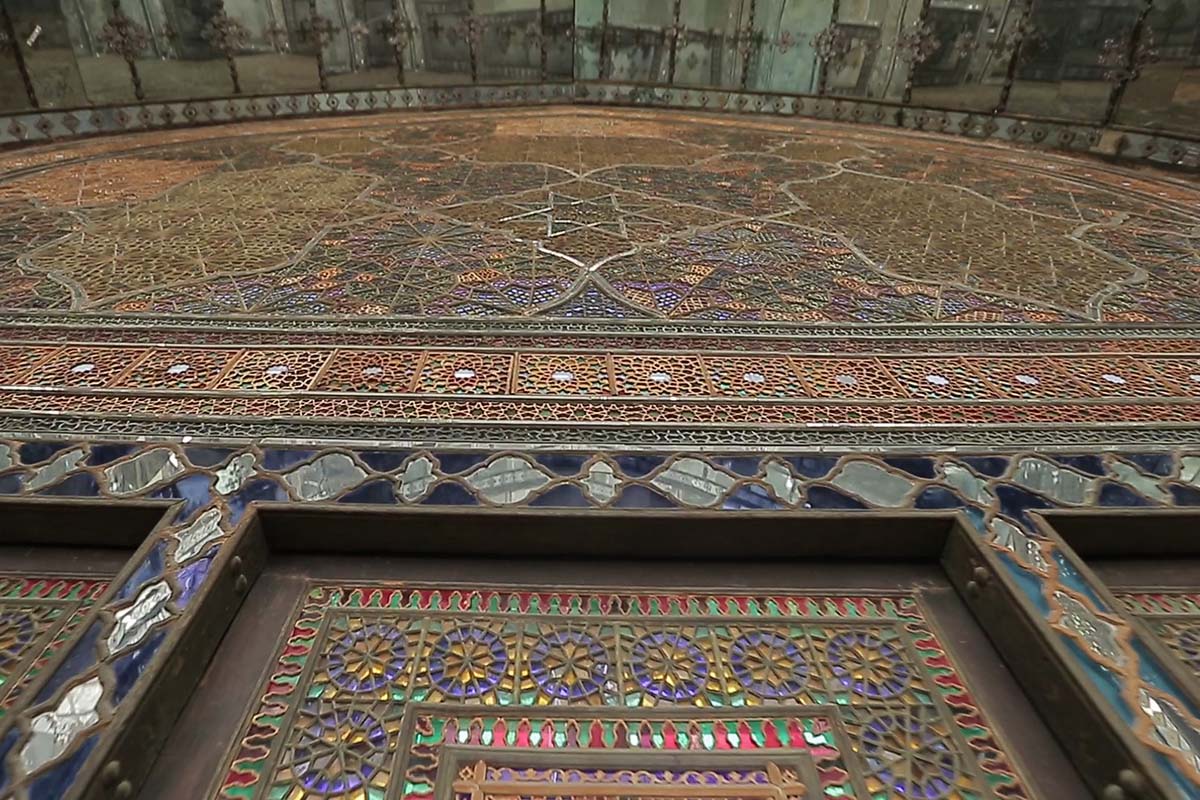 Golestan palace, Marble Veranda, Orsi windows
Golestan palace, Marble Veranda, Orsi windows
Location
Golestan Palace Museum is located in at Arq Square. Tehran Iran. It can be easily reached while you are in Tehran either by public transportation like taxis buses or underground. The station of underground for the Golestan Palace Museum is called Panzdaeh Khordad.
Buildings History and Function
Shams-ol-Emaneh (Edifice of the Sun)
It is the most stunning structures of the Golestan Palace. The idea of building a tall structure came to Nasser-ol-Din Shah before his first European and from pictorial images of European buildings. The Monarch wanted a structure from which he could have panoramic views of the city. Designed by Moayer-ol-Mamalek, construction on the Shams-ol-Emareh began in 1865 and was completed two years later. The architect was Master Ali Mohammad Kashi. The building has two identical towers. The exterior views have multiple arches, intricate tile work and ornate windows. This building is a fusion of Persian and European architecture.
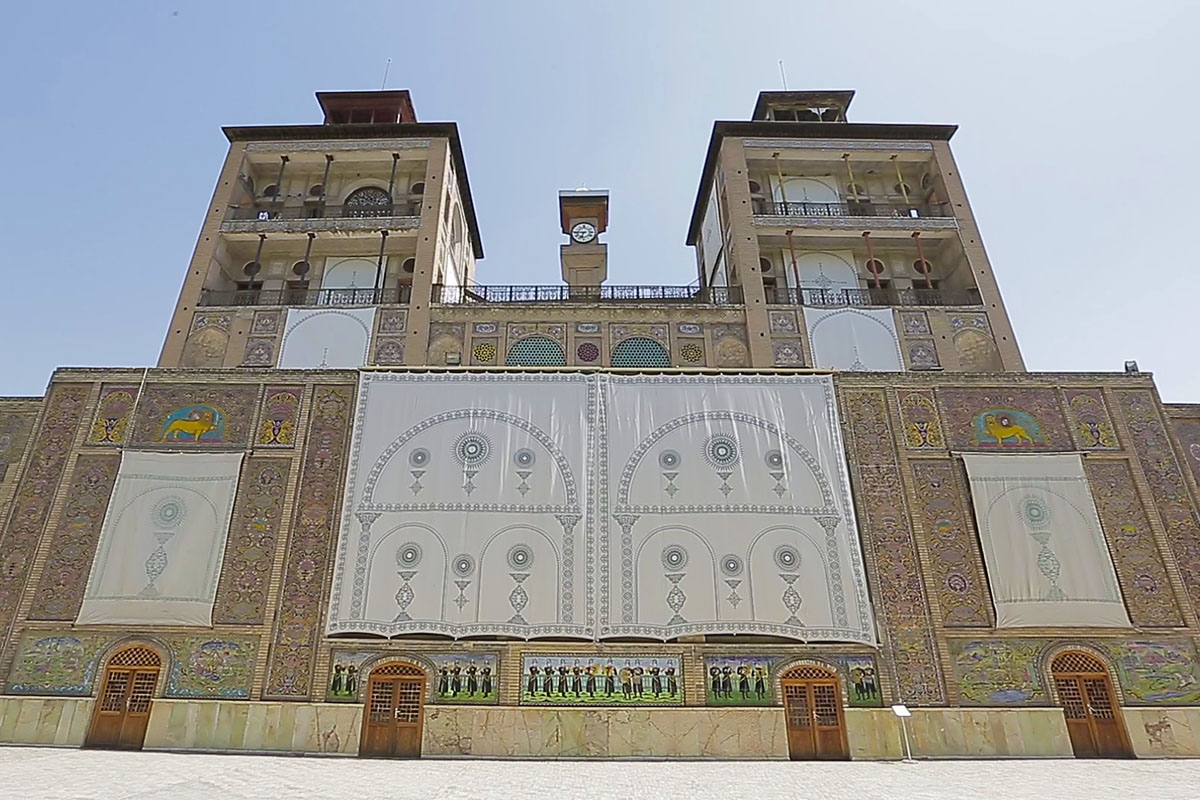 Golestan palace Shams-ol-emareh building facade
Golestan palace Shams-ol-emareh building facade
Talar-e Aineh (Hall of Mirror)
It is the most famous of the Palace hall. This relatively small hal is famous for its extraordinary mirror work. The Hall was designed by Haj Abdoul Hossein Memar bashi (Sanie-ol-Molk). Yahaya Khan Moetamed-ol-Molk,the Minister of Architecture, acted as consultant to the designer. The Ottoman king, Sultan Abdoulhamid, send precious gifts to Nasser-ol-Din Shah. Reportedly, these gifts were copious and enough to fill a castle. The Qajar monarch was delighted with these gifts. He decided to build an exhibit hall worthy of these gifts within the confines of Golestan Palace. It is believed that Nasser-ol-Din Shah, himself, designed the structure, with a central hall large enough to house the carpet that was sent by Sultan Abdoulhamid.
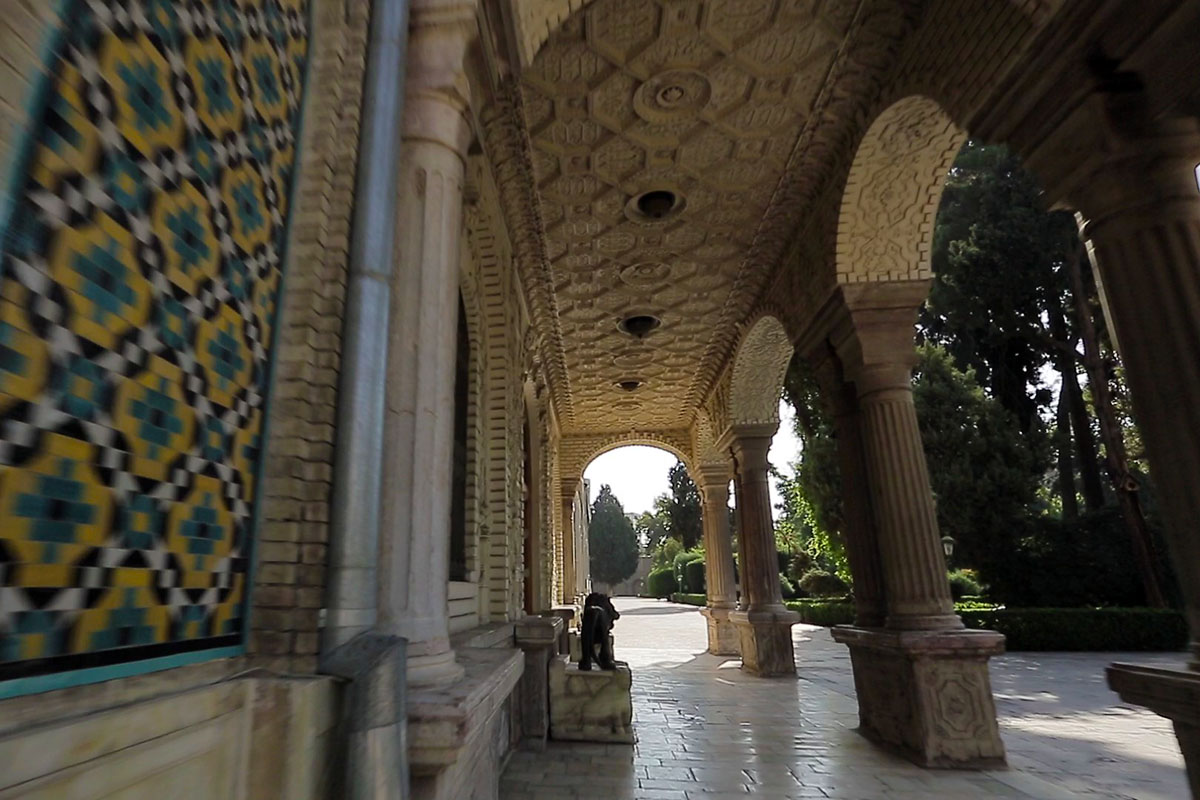 Golestan palace, the lion statue at the mirror hall entrance
Golestan palace, the lion statue at the mirror hall entrance
Abyaze (White) Palace
Completed in 1883, the Abyaze (White) Palace now houses one of the most interesting ethological museums in Iran. There is a colorful exhibition of tradition Iranian costumes, as well as a folk art exhibition.
Emarat Badgir (Building of the Wind Towers)
It was constructed during the reign of Fath Ali Shah (circa 1806). The building underwent major renovations, including structural changes, during the reign of Nasser-ol-Din Shah. A watercolor rendering by Mahmood Khan Malek-ol-Shoara depicts the original structure prior to renovations. The building is flanked by two rooms known as goshvar (earrings). There is a central room which boasts the finest stained glass window in Golestan Palace. Outside, there are four wind towers of blue, yellow and black glazed tiles and a golden cupola. The wind towers are constructed to allow the cooling wind to move through the structure.
Talar-e Berelian (Hall of Brilliance)
It was named so for it is adomed by the brilliant mirror work of Iranian artisans. The Hall was build by Nasser-ol-Din Shah build to replace another hall called Talar Bolour (Crystal Hall). Built by Fath Ali Shah the Bolour Hall had been laid waste by the damp. The Berelian Hall is famous for its mirror work and chandeliers. An oil painting by Yahya Khan Sanie-ol-Molk Ghafari, showing the decorations of this hall before renovations carried out by Mozafar-ol-Din Shah (r. 1896-1907). exists in the Golestan Palace.
Talar-e Zorouf
This building replaced the Narenjestan building in the north of Adj Hall or sofre Khaneh. All the chinaware that were dedicated to Qajar kings by the European kings were taken to this room and was arranged in show cases which were built for this purpose.
All the chinaware that exists in this room is rare and beautiful. Among them these are the most exceptional:
- The chinaware that shows the Napoleonian wars dedicated by Napoleon the first.
- The chinaware dedicated by King Nicoli the first.
- Chinaware studded with gems and jewels dedicated by Queen Victoria.
- The chinaware which was dedicated by King Vilhelm to the Iranian crown prince.
- A set made by Melacit stone dedicated by Alexandre the third.
Talar-e Adj (Hall of Ivory)
It is a large hall used as a dinning room. It was decorated with gifts presented to Nasser-ol-Din Shah by European monarchs. Among the Golestan Palace collection, a watercolor by Mahmoud Khan Malek-ol-Shoara, shows the exterior view of this hall during the Qajar period.
Talar Almas (Hall of Diamonds)
It is located in the southern wing of Golestan Palace next to the Badgir Building. It is called Hall of Diamonds because of the exceptional mirror work inside the building. The construction of this hall dates to the time of Fath Ali Shah (circa1806). Nasser-ol-Din Shah renovated this hall changing its appearance and replacing the hall’s Ogival arches with Roman ones. He also ordered the walls covered with wallpaper imported from Europe. As the basic structure dates back to the time of Fath Ali Shah, it is only. It is only apt that this hall should be devoted to the exhibition of art and handicrafts from that period.
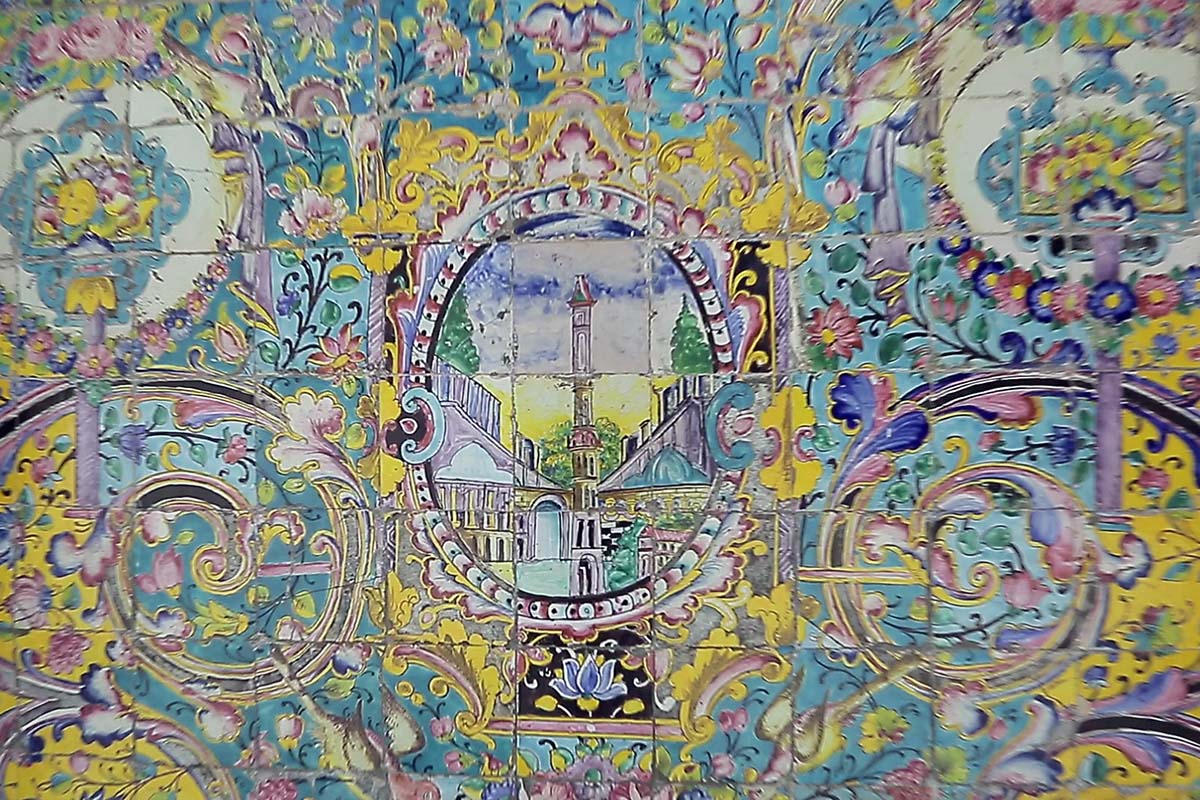 Golestan palace, a sample of the tile work prevailing all around the courtyard
Golestan palace, a sample of the tile work prevailing all around the courtyard
Chador Khaneh
Located between the Badgir and Almas Hall, the Chador Khaneh (House of Tents) was used as a warehouse for royal tents. The Qajar tribe loved the great outdoors and made several royal camping trips each year. These trips were grand affairs with multitudes of servants and attendants – in addition to all royal necessities. Many tents were needed to accommodate the entourage. Thus, a need for a House of Tents. The Chador Khaneh has undergone major renovations and is now used as a meeting and lecture hall.
Aks khaneh
The Aks khaneh (House of Photographs) is a large summer chamber under the Badgir. As with the Hows Khaneh, this room was cooled using a cooling system that pumped water from a subterranean stream (qanat) into a small pond. Due to the harmful effects of humidity, this system is no longer in use. This room has undergone major renovations and is now used as an exhibition space for photographs of the Qajar period. Nasser-ol-Din Shah took an interest in photography not long after the invention of the camera. In fact, he was an avid photographer. The Aks khaneh houses some photographs taken by Nasser-ol-Din Shah and some photographs captioned by him
Takht-e-Marmar
The spectacular terrace known as Takht-e-Marmar (Marble Throne) was built in 1806 by order of Fath Ali Shah Qajar (r. 1797-1834). Adorned by paintings, marble-carvings, tile-work, stucco, mirrors, enamel, woodcarvings, and lattice windows; the throne embodies the finest of Iranian architecture. The Marble Throne is one of the oldest buildings of the historic Arg. The existing throne, which is situated in the middle of the terrace (iwan), is made of the famous yellow marble of Yazd province.
The throne is made of sixty-five pieces of marble and was designed by Mirza Baba Naghash Bashi (head painter) of the Qajar court. Mohammad Ebrahim, the Royal Mason, oversaw the construction and several celebrated masters of the time worked on the execution of this masterpiece. The architectural details and other ornaments of the terrace (iwan) were completed during the reigns of Fath Ali Shah and Nasser - ol- Din Shah (r. 1848-1896).
Coronations of Qajar kings, and formal court ceremonies were held on this terrace (iwan). The last coronation to be held at Takht-e-Marmar was the coronation of, the self-proclaimed King, Reza Khan Pahlavi in 1925.
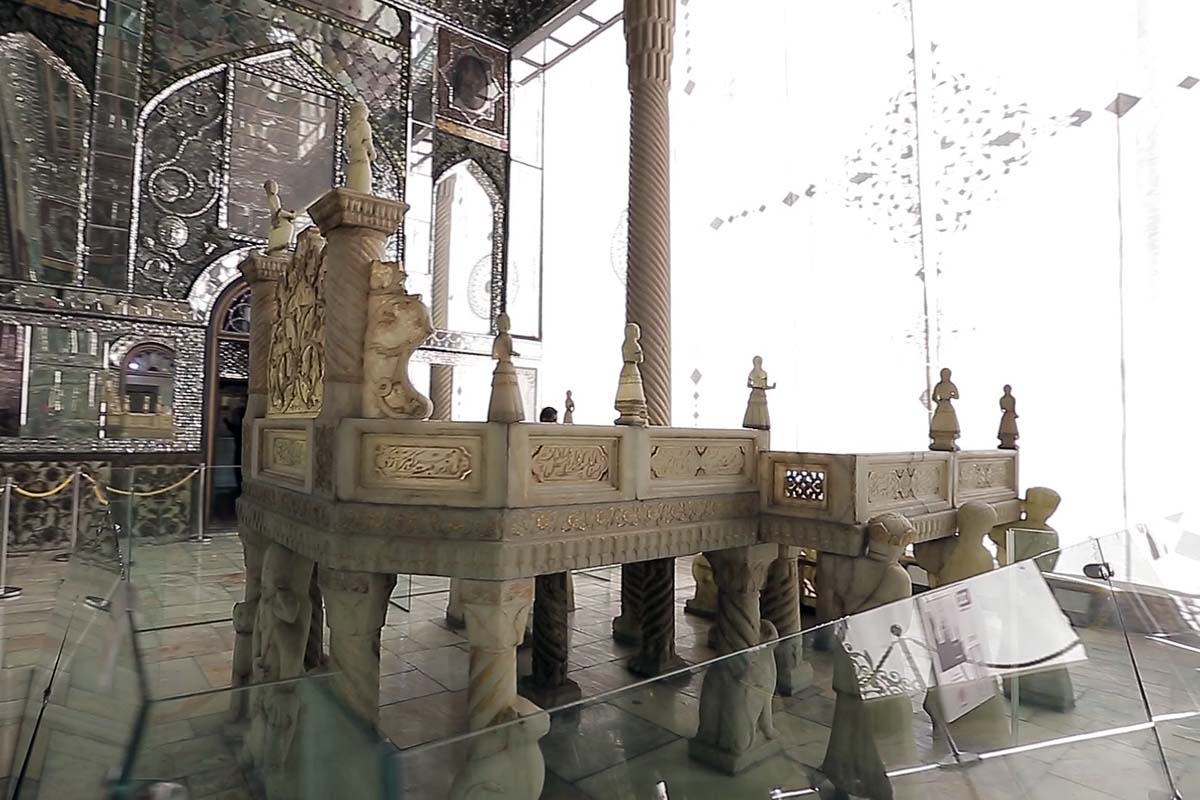 Golestan palace, Marble Throne
Golestan palace, Marble Throne
Howz Khaneh Museum
Works of European painters presented to the Qajar court are housed in the Howz Khaneh. The Howz Khaneh was used as a summer chamber during the Qajar ear. A special cooling system pumped water form a subterranean system of streams (qanats) in this case the king’s qanat – into small ponds inside the chambers. Hows means pond, thus the name Hows Khaneh. The system was designed to pass through as many summer rooms as was necessary. The water was then channeled outside to irrigate the royal gardens. Due to the harmful effects of humidity, this system is no longer in use.
Emarat-e- Khabgah
Built as the residence of Queen Elizabeth II during her short visit to Iran in 1955, The Emarat-e- Khabgah (Siesta House) is the most recent addition to Golestan Palace. The building is designated to house the Royal Manuscripts Library and the Qajar photograph collection. The Royal Manuscript Library is currently housed at a temporary location awaiting its eventual move to its permanent home in the Khabgah. The Library’s collection is among the most valuable illustrated works in Iran, such as Moraga-e- Golshan, Shahnameh Baisongori.
Khalvat-e-Karim Khani
Dating back to 1759, this building was a part of the interior residence of Karim Khan Zand. The basic structure of the Khalvat-e-Karim Khani is similar to Takht-e-Marmar. Like the latter, it is a terrace (iwan). There is a small marble throne inside the terrace. The structure is much smaller than Takht-e-Marmar and it has much less ornamentation. There was once a small pond with a fountain in the middle of this terrace. Water from a subterranean stream (the king’s qanat) flowed from the fountain into the pond and was later used to irrigate the Palace grounds.
Nasser-ol-Din Shah was fond of this corner of Golestan Palace. He is said to have spent much time here in rest and repose– smoking his water pipe in quite reflection. In fact, some believe that it was he who dubbed the structure Khalvat (a cozy corner). It seems extraordinary, but the valuable gravestone of Nasser-ol-Din Shah finally found its way to this quite corner of the Palace after being misplaced for sometime. This marble stone with a craved image of Nasser-ol-Din Shah is indeed a site to behold.
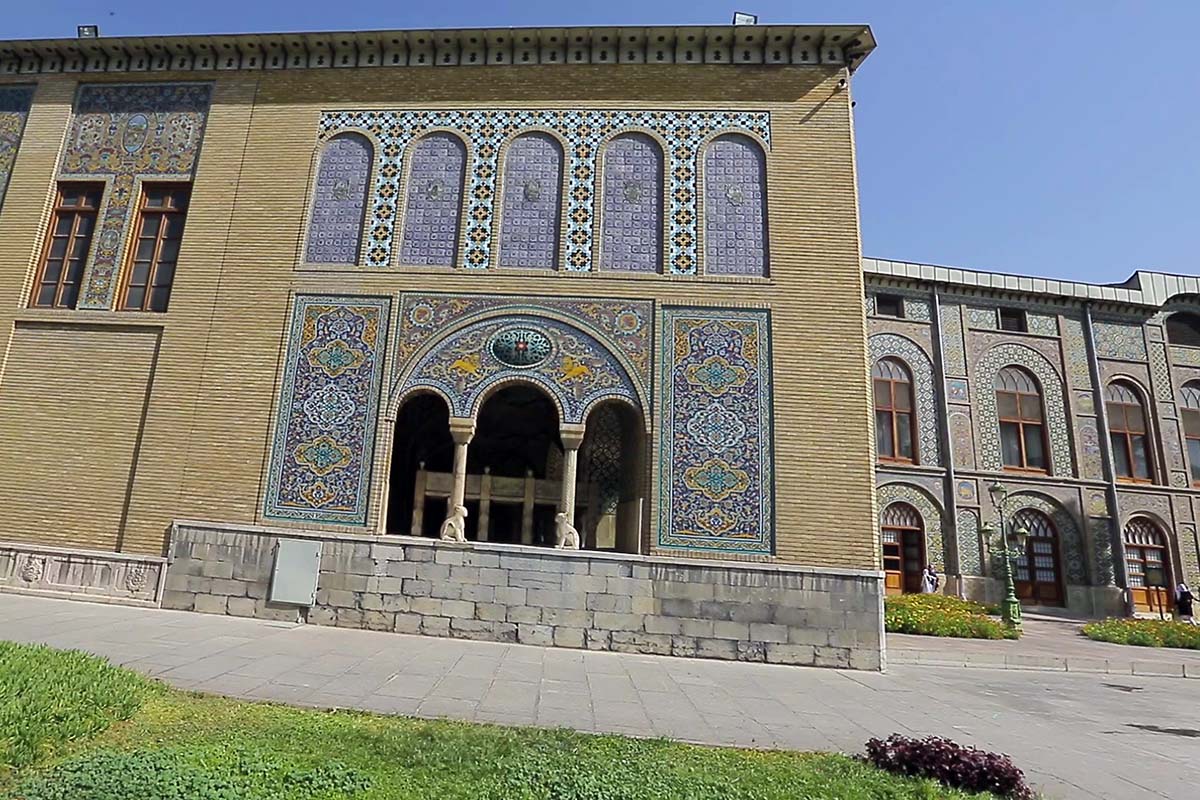 Golestan palace, khalvat karimkhani
Golestan palace, khalvat karimkhani
Special Museum
This building is located under the Salam Hall or Museum. It is indeed a part of the first Iranian museum, which was built by Mohamad Ebrahim Khan Memar Bashi. In Nasser-0l-Din shah’s period, this building was used as a warehouse for the china and silverware, which was dedicated to Qajar kings. In the Pahlavi period, this warehouse was turned in to a museum to expose the rare gifts, which was given to the Qajar kings.
Right now in addition to the gifts, some rare objects are kept in this museum, some of them are as follows:
- Helmet of king Esmail Safavid.
- Bow and arrows of King Nader.
- Armband of Fath Ali Shah.
- The collection of Qajar Seals.
- Aga Mohamad khan’s crown.
- A decorated ostrich egg.
Negar Khaneh
The original collection of the museum hall is now scattered among Tehran’s many museums. However, the paintings of the royal court are now kept at the Golestan Palace – with the European paints housed in the Hows Khaneh and the works of Iranian painters housed in the Neggar Khaneh. Meant to show the evolution of painting in Iran during the Qajar era, the works of Iranian painters are exhibited in two sections. Housed in the southern part of the Neggar Khaneh are the works of early Qajar masters such as Mirza Baba, Mehr Ali Afshar, Ali Akbar Khan Mozaien-ol-Douleh, Aboul Hassan Sani (Sanie-ol-Molk) who was Kamal-ol-Molk’s uncle. The northern Neggar Khaneh, was the seat of the Royal Guard during the time of Mohammad Reza Pahlavi. The northern hall underwent substantial renovations in 1995 and now houses the works of later masters of the Qajar era such as Mahmoud Khan Saba (Malek-ol-Shoara), Mohammad Gafari Kashani (Kamal-ol-Molk), Mehri, Mosa Momayez.
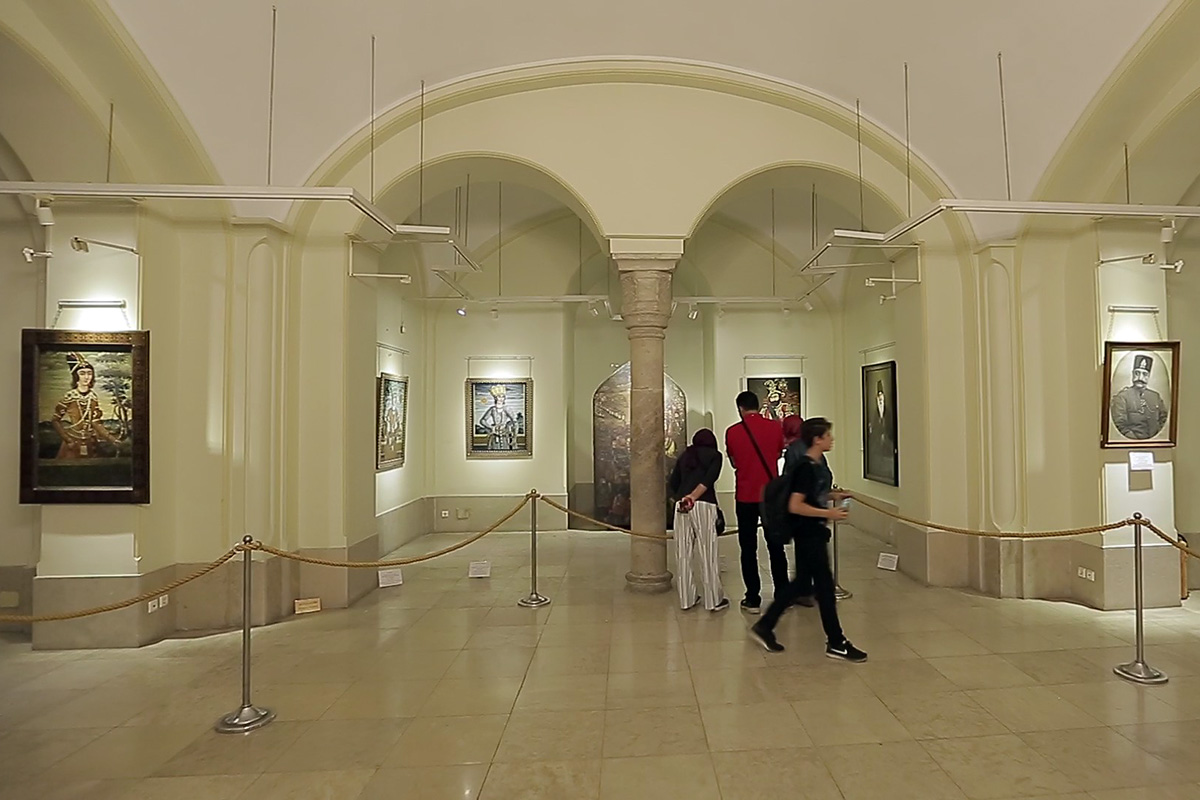 Golestan palace, Negarkhaneh
Golestan palace, Negarkhaneh
Talar Salam (Reception Hall)
It was originally designed to be a museum. After the Takht-e-Tavoos (Iranian’s famous Jeweled Peacock Throne) was moved to the Royal jewels collection at the Central Bank, this hall was designated to hold special receptions in the presence of the king, hence the name Talar Salam. Tourists and envoys from European courts received in the Arg during the reign of Nasser-ol-Din Shah, spoke of this outstanding hall comparing it to its European counterparts. This hall has exquisite mirrors work. The ceiling and walls are decorated with plaster molding. The floors are covered with mosaic. During the reign of Nasser-ol-Din Shah, this hall was used to exhibit Iranian and European paintings alongside gifts presented to the Iranian court. Royal jewels were also exhibited inside glass cases. These jewels are now housed at the Royal Jewels Museum of the Central Bank
Opening hours
- Spring and summer: from 9:30 to 18:30 (ticket sales for the first six months of the year until 17:30)
- Autumn and winter: from 9:00 to 17:00 (ticket sales for the second half of the year until 16:00)
Tickets Prices for Foreign Visitors
| Tickets for different buildings | Price (Rials) | Comment |
| Main Entrance to the Complex | 1000000 | |
| Marble Throne Hall | 500000 | The oldest building of the complex |
| Khalvat Karimkhani | The northwest corner of Golestan Palace | |
| Negarkhaneh Museum | 500000 | displaying Iranian paintings belonging to the Qajar period |
| Special Museum | 500000 | displaying objects donated to Qajar kings |
| Private Palace | 1000000 | including Salam, Mirror, Ivory, Glassware and Diamonds Halls |
| Howz Khaneh Museum | 500000 | displaying European paintings belonging to the Qajar period |
| Shams-ol-Emareh Mansion | 500000 | the highest building of Golestan Palace during Naseri reign |
| Badgir Mansion | 500000 | building related to the reign of Fath Ali Shah |
| Aks Khaneh Mansion | 500000 | Hozkhaneh of Badgir mansion displaying Qajar photos |
| Talar Almas (Hall of Diamonds) | 500000 | building related to the reign of Fath Ali Shah |
| Anthropology Museum (Abyaz) | 500000 | displaying objects related to Iranian ethnology |
| Total Cost | 6500000 |
The information about the different sites in Golestan Palace Museum can be obtained form the ticket boot.
Video and still Photography is allowed inside the open air. The galories and buildings can not be photographed. Commercial photography is not permitted. No camera Stands are allowed.
Contact information
Mailing address: P.O. Box 11365-4995
Telephone: + 98 21 311-3335
Fax: +98 21 311-1811
Website: www.golestanpalace.ir
Golestan Palace Tour
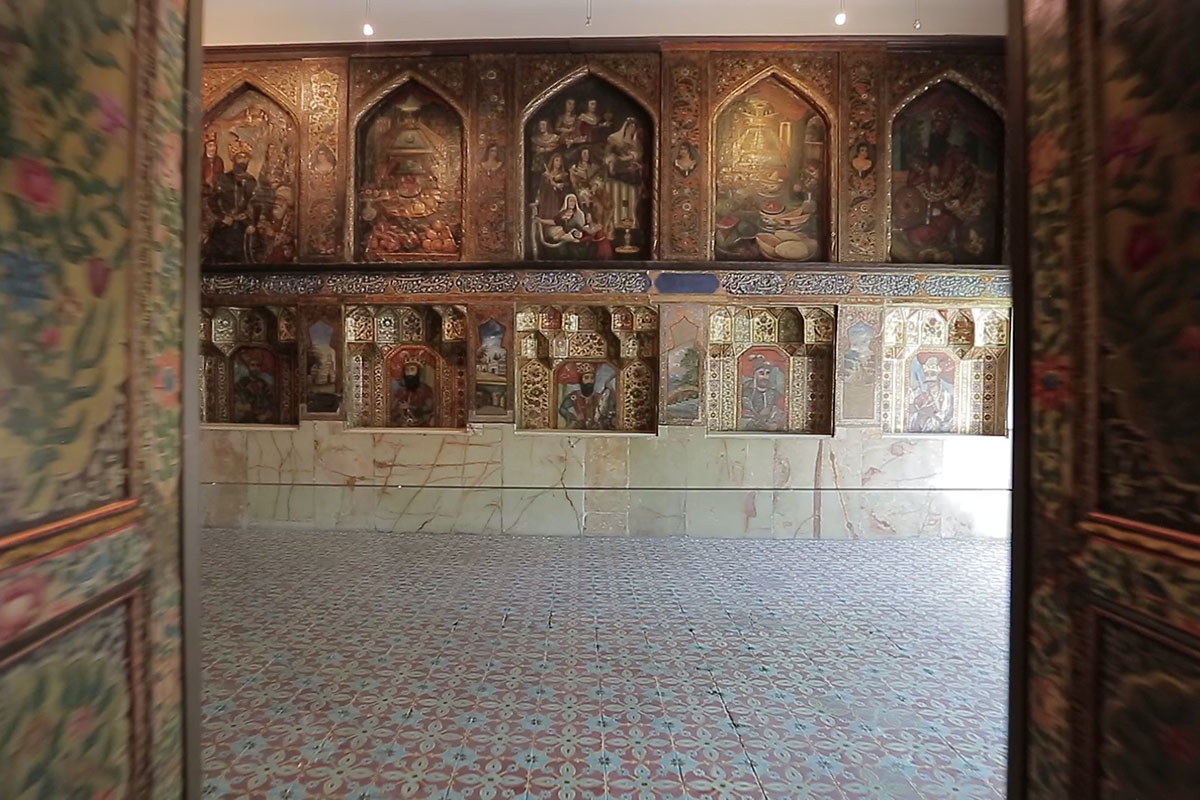 Take a look at our Tehran Tours and by booking one of them let our professional tour guides from Tehran help you explore this amazing UNESCO world heritage site of Tehran city.
Take a look at our Tehran Tours and by booking one of them let our professional tour guides from Tehran help you explore this amazing UNESCO world heritage site of Tehran city.

